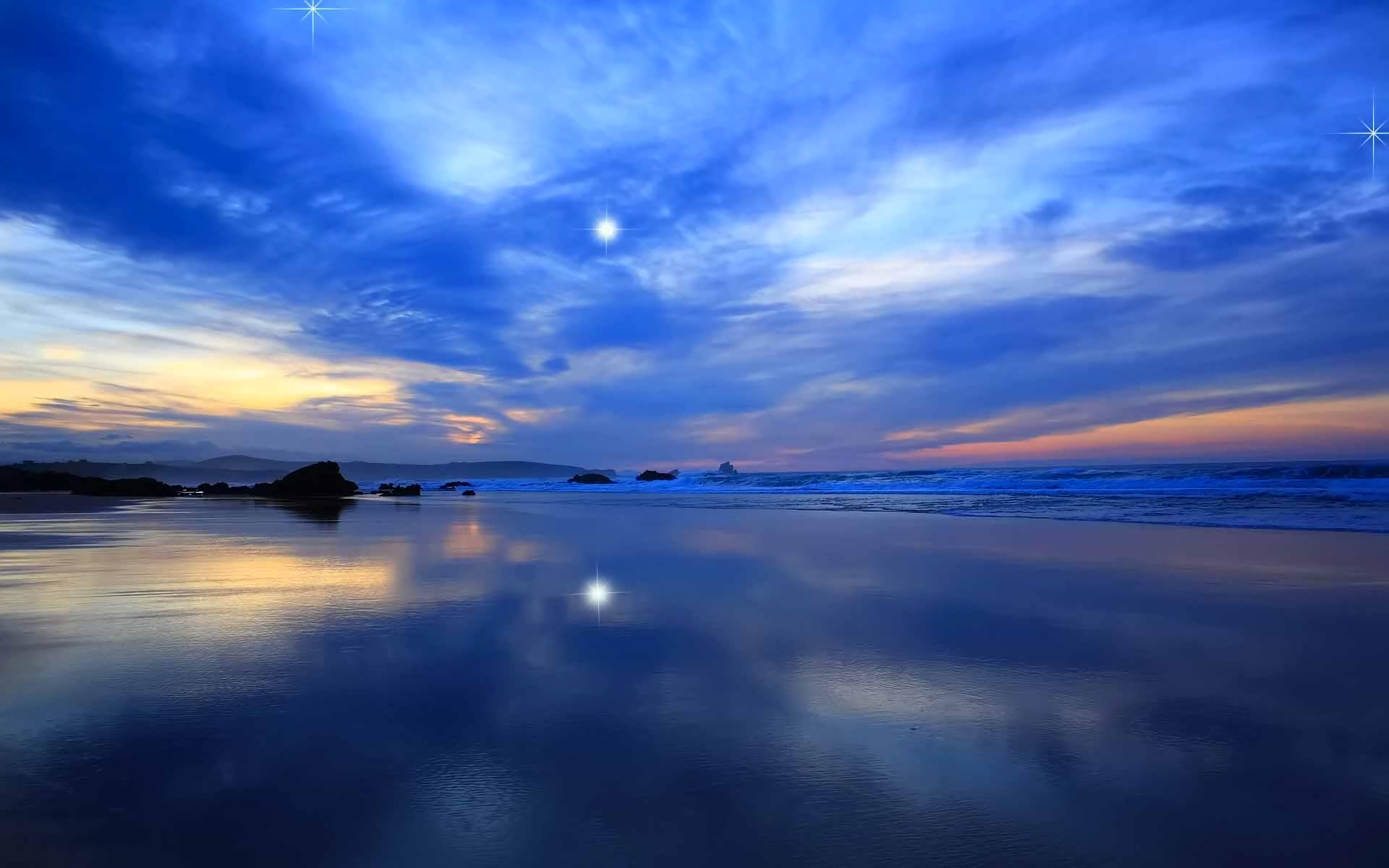
When light hits the ocean, the water absorbs colours with longer wavelengths first, reflecting to our eyes those with shorter wavelengths.

The wavelength of other colours become progressively shorter, with blue and violet at the end of the range, with the shortest of all. Different colours of light possess different wavelengths, with red light having longer wavelengths.
#Blue ocean full
Īs we know, sunlight contains the full spectrum of colours, as we see in rainbows, it contains all hues, from red to violet. The reason behind the ocean appearing blue does, in fact, involve reflection, but it is not simply a mirror of the sky. In these cases, the water isn’t reflecting the sky. But if we sink below the surface, however, the blue colour remains, and it does when we look at the ocean from space, too. Sure, water does reflect the sky on its surface: from the coast, it may appear blue on a sunny day, grey when it’s stormy, or even show shades of pink during sunset. So then, why does the ocean appear blue? And so do other bodies of water.įor many years, people believed (some still do!) that the ocean and other water bodies are a shade of blue because they reflect the blue sky. Of course, we all know that clean water is colourless, it is transparent. In this article, we will explain why the ocean is blue, so that you can finally understand how it works. There is one thing we all know for sure, however, and it is that the ocean and the sea appear to be blue. The rest, especially its deepest parts, remain unexplored. As you can guess from this information, the ocean is extremely important for life on our planet, and it works as its support system, mitigating climate change, producing oxygen, and providing humans with food and economic opportunities.ĭue to its vastness, only 5% of the ocean has been explored and charted by humans. The ocean contains more than 97% of Earth’s water, and it supports 99% of the total biosphere. Usually, due to historical, cultural, and geographical factors, we divide it into 5 major basins: the Pacific, Atlantic, Indian, Arctic and Southern Oceans. The ocean is a massive body of saltwater, connected throughout the globe, that covers roughly 71% of the total surface of the planet.


 0 kommentar(er)
0 kommentar(er)
